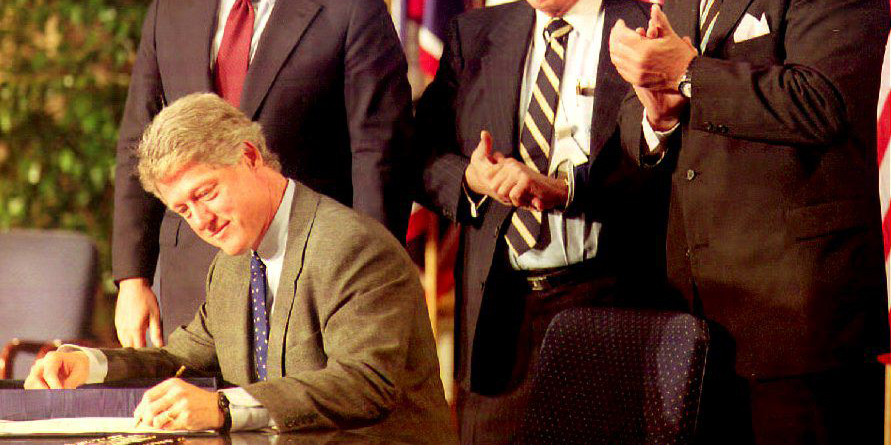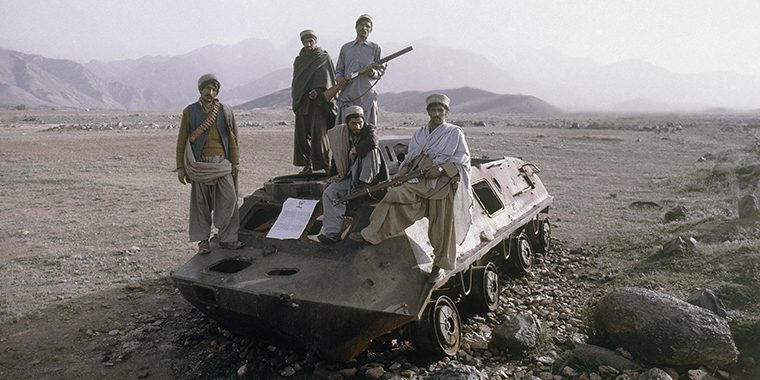 American Free Trade Agreement (NAFTA) on December 8, 1993." />
American Free Trade Agreement (NAFTA) on December 8, 1993." />What is isolationism? What is engagement? In this free resource on foreign policy, explore why some leaders view the outside world as a threat and others view it as an opportunity.
Last Updated May 05, 2023 American Free Trade Agreement (NAFTA) on December 8, 1993." />
American Free Trade Agreement (NAFTA) on December 8, 1993." />
U.S. President Bill Clinton signs the North American Free Trade Agreement on December 8, 1993.
Source: Paul J. Richards/AFP via Getty Images
The foundational question of whether a country should actively participate in global affairs (engagement) or instead pull up the drawbridge and shield itself from the outside world (isolationism) lies at the heart of all foreign policy–making.
In today’s increasingly interconnected world, strict isolationism is largely untenable. The real debate is over a country’s form and level of engagement.
Engagement can take the form of a country participating in global trade, joining multilateral organizations, shaping international norms and standards, entering into military alliances, and promoting cultural exchange. Those partnerships can improve living standards, increase security, and enrich societies—both economically and socially. In addition, countries that value such cross-border cooperation are often better equipped to confront today’s biggest challenges, like climate change and global health, which require collective solutions.
Meanwhile, advocates of less engagement believe their approach has certain benefits too. They argue, for instance, that by steering clear of military alliances, countries can more easily avoid getting dragged into costly foreign wars. Governments favoring less engagement also sometimes believe they can limit negative influences, such as drugs and crime, from entering their countries.
Levels of engagement exist on a spectrum. Even North Korea—the so-called Hermit Kingdom and textbook definition of an isolated country—maintains vital economic ties with China and participates in global events like the Olympic Games. On the other end of the spectrum, the United States, often described as a superpower, chooses at times to remain on the sidelines of various crises and global issues.
Isolationism has been a strategy in U.S. foreign policy at various periods of history, often in response to real or perceived failures in focusing resources on costly or dangerous efforts abroad.
Why is complete isolationism an extreme and largely impractical approach to foreign policy today?
In the global era, international trade is essential. No country can produce everything it needs at reasonable prices within its borders. Instead, a country will be richer if it makes what it is best at producing and imports what it is less efficient at producing. That idea is known as comparative advantage. The United States, for instance, sells airplanes to countries around the world but imports products like coffee and tea from elsewhere. It is no coincidence that the world’s most economically isolated country, North Korea, is also one of its poorest.
In addition, as hard as certain countries try to wall themselves off, many challenges in today’s globalized world—including refugee crises, climate change, economic instability, and pandemics—simply do not recognize borders. Take climate change, for example. Major emissions from countries such as the United States and China contribute to rising sea levels that threaten to submerge low-lying nations like the Maldives. Facing such existential threats, the Maldives does not have the luxury of choosing isolationism; it needs to work with other countries to address this global challenge. Another example is the COVID-19 pandemic, which spread to even the most isolated countries that attempted to close their borders in the hope that they could keep out the virus. COVID-19 however increased some degree of protectionism across the world. Countries limited mobility and trade across borders to decrease the spread of the disease, especially when little was known about its spread. However, countries still needed to share technology and resources—for example, producing masks and distributing vaccines— to fight the virus.

Afghan rebels stand on top of a knocked-out Russian armored vehicle in Afghanistan in February 1980.